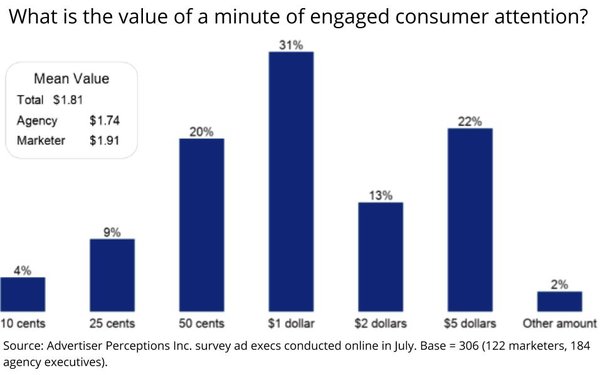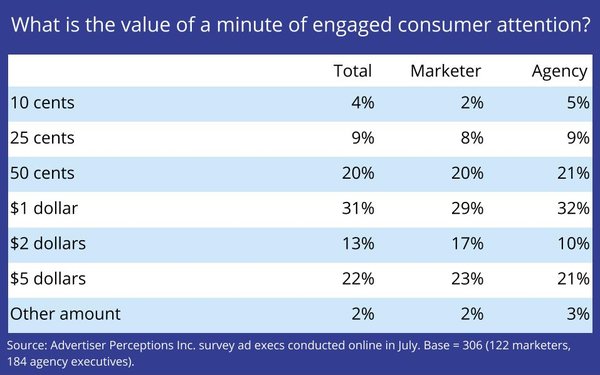
At a time when
so-called “rewarded, opt-in” advertising models are gaining steam on Madison Avenue, MediaPost asked Advertiser Perceptions to poll a representative sample of advertisers and
agency executives on what they consider the per-minute value of engaged consumer attention is worth.
Turns out, it’s a median of $1.81, but marketers averaged about 10% more --
or a median of 17 cents more per engaged minute -- than agency executives.
Many of the “rewarded,” “opt-in” or other incentivized models being explored
don’t necessarily offer consumers cash for completing an engagement with a brand’s advertising. The dollar valuations serve as a baseline for understanding the economics of what could be a
new model for value exchange in the advertising world.
advertisement
advertisement
Among respondents citing “other,” the verbatim responses ranged from “5 cents” to “80 cents” to
statements such as “depends on product or demo” and “This is really very hard to answer. since there many factors that play into determining a worth.”
